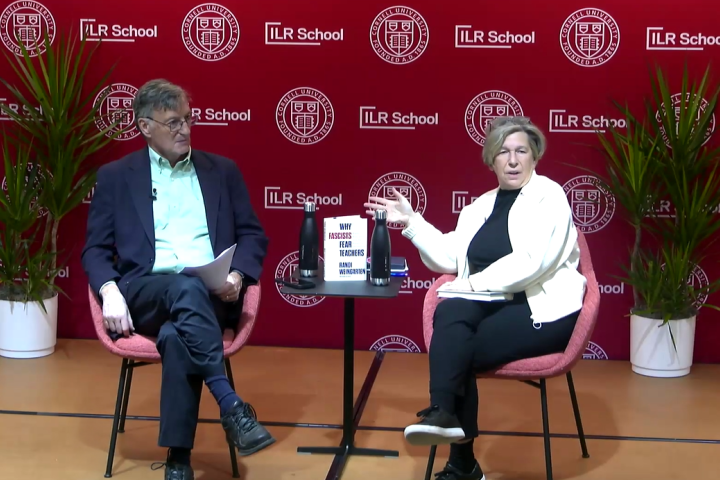
The Role of Union Leadership for Worker Acceptance of the COVID-19 Vaccine
John August is the Director of Healthcare Programs at the Scheinman Institute.
There is a great deal of news to sort through at this moment in history.
I think most would agree that the slow distribution and administration of the COVID-19 vaccines is a matter of deep concern, part of the mix of the economic, political, and health crises the nation faces all at once.
Many factors have been cited as reasons for the slow roll-out of shots being delivered to the population:
- Lack of coordination and funding between federal, state, and local governments
- Disagreements over the categories of people who should be “first in line”
- Building the physical and human infrastructures needed for mass immunization, including pay and training for those who would administer the shots
- Anti-vaccination activism
- Challenges overall with vaccine acceptance
A very large population that must be vaccinated are the workers in the nation’s nursing homes.
Governor DeWine of Ohio has reported that only 40% of nursing home workers there had agreed to receive the vaccine; and according to an Associated Press report just in the past few days, North Carolina nursing homes as well as large national nursing home chains report acceptance rates of only 45%.
Vaccine acceptance is a major challenge in workplaces, both unionized and non-unionized.
The vaccine is not mandatory nor a condition of employment, which to many seems inconsistent with the impact that COVID-19 has had on people, on families, on communities, and on economic activity. The disruption to society has been almost unprecedented.
While some believe it should be mandatory, a great deal of experience with efforts to make vaccines mandatory has taught us that such efforts generally are mistrusted and are therefore rejected.
Thorough evaluation of safety, effectiveness, and need are legitimate and necessary thresholds that must be met for there to be wide acceptance. When it comes to the workplace, people tend to draw lines in the sand when it comes to personal safety and health. Unions have consistently opposed mandatory vaccination while at the same time promoting acceptance among their members.
And it is widely known that African-American and other minority groups are very hesitant and resistant to vaccines.
So, what to do?
I have had the opportunity to learn about the internal education going on in New York and Massachusetts among union members in nursing homes. Acceptance rates are as high as 90% in Massachusetts, and includes a majority of union members in New York.
The 1199 Training Funds in both states, working in collaboration with the Union, SEIU/1199 leadership and industry leaders developed webinars for union members. The information in the webinars, attended widely by union members on paid time at work came from Union leaders, as well as prominent leaders from the Centers for Disease Control and Prevention and the State Department of Health.
Topics in the webinars include:
- All steps on how to schedule and receive the vaccine
- Background information on the disease itself to assure participants of the serious nature of this novel coronavirus
- Very specific data on the impact of COVID-19 on older adults: that 80% of deaths in the U.S. are among people 65 years of age and older
- Confirmed data in nursing homes as of November, 2020
- Confirmed cases among residents: 377,510
- Confirmed deaths among residents: 76, 542
- Confirmed cases among nursing home staff: 322,690
- Confirmed deaths among nursing home staff: 1162
- The risks:
- Of exposure
- Of transmission to residents, families, and communities
- Explanation of the three phases of clinical trials to prove safety and efficacy
- Explicit information showing that the vaccine CANNOT give the recipient COVID-19
- Provides information about how to access a Phone APP: “V-Safe” which helps monitor side effects from the vaccine and issues reminder to receive the second dose
Finally, the efforts by the union to use its resources in conjunction with its training funds, employers, trusted government officials, and its own leaders to communicate directly with union members about a large common interest is a wonderful example of conflict resolution in practice and on a large and very public scale.
It is also a great example about the essentiality and definition of leadership in a crisis:
Facts matter, but trust matters more. It is always difficult to have hard conversations to have people act against their own fears and inhibitions for a broad set of interests. The work of the Union in the vaccination roll out is a great example of how common and mutual interests can take a central role in peoples’ lives.



